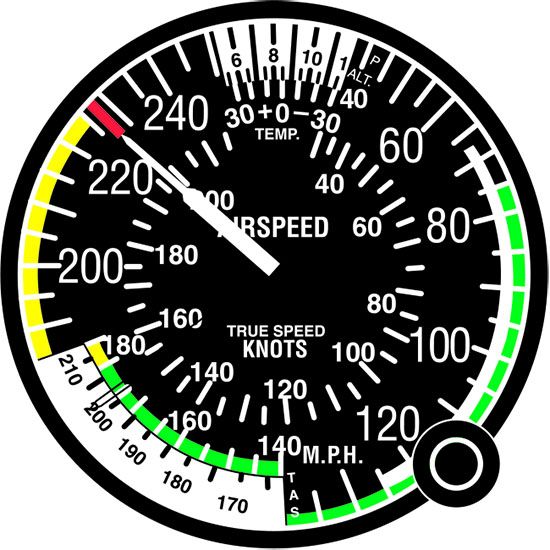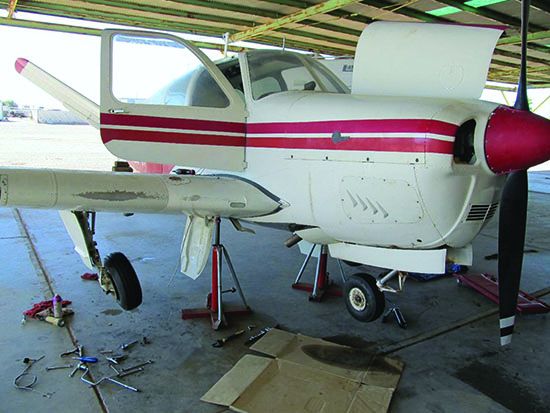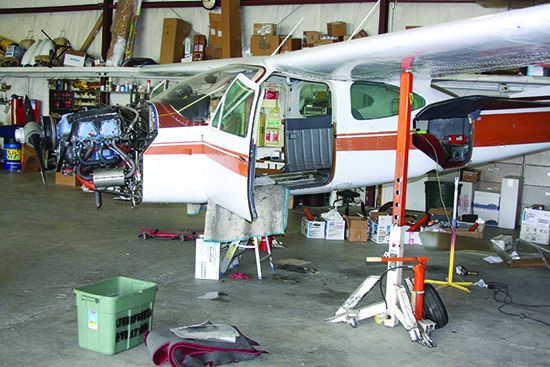
An aviation’s early days, there were few if any regulatory criteria on designs and operations. Pilots and maintenance personnel were up to their own on deciding what limits they would adhere to. Accidents were plentiful and often unnecessary. The public demanded that safety be improved, and government, engineers and the military stepped in to establish limits as aviation became more advanced.
Manufacturers responded to the demand, a process greatly accelerated by World War Two. Engineering started with design analysis using the parameters requested by the customer to come up with an aircraft that fulfilled the request. Sometimes in-flight or structural testing revealed a bad design and accidents occurred.
Along came the Civil Aeronautics Agency, which later became the Federal Aviation Administration. These organizations established aircraft airworthiness standards, which were enhanced as years went by thanks to the reams of data collected from various activities including accidents, flight testing and wind tunnel tests. After meeting all the standards type and production certificates were issued manufacture. For small airplanes, those weighing no more than 12,500 lbs., FAR Part 23 is the regulatory standard type-certified small aircraft must now meet. Additional FAR Parts 33 and 35 cover certification of engines and propellers, respectively.
LIMITATIONS
Why limits? Limits have been established for many different reasons. As pilots, we may think that operation at over maximum weight would only result in reduced performance. Not necessarily. Although performance will suffer as a result of being overweight, other important factors also are involved, such as controllability. In other words, you may not be able to recover from a gust of wind on takeoff or landing due to insufficient flight control response.
Operation above airspeed limits, especially in turbulence, may result in buffeting or even structural damage. In extreme cases, aerodynamic control-surface flutter and the stresses imposed will damage the aircraft structure, perhaps resulting in subsequent loss of control of the aircraft as well. Certainly, maneuvering speed is an important value to memorize. The reason for this is very much to keep the structure within the designed airframe load limit envelope and in one piece.
Landing gear operation above limit speeds places an additional load on the operating mechanisms. Multiple operations at or above the limit can certainly cause a failure of the landing gear, but when that might happen is anyone’s guess.
Flap overspeed operation is frequently dismissed as “no big deal.” Unfortunately, it is a big deal. The flap operating system is designed to operate at a maximum load and not only is the operation compromised at higher-than-limited speed, it is the wing structure that is impacted as it absorbs the stresses created by changing the center of lift. Again, not only is this compromising aircraft control but it’s damaging the structure as well.

Landing gear operation above limiting speed places an excess load on the mechanism and various components, like gear doors, which can lead to bent or broken parts preventing the landing gear from extending or retracting. It is prudent to have the landing gear inspected by competent professionals, using the manufacturer’s data, after an overspeed episode.
It’s also important to understand your airplane may have more than one gear-related airspeed limitation. For example, there may be one speed limit for flying with extended landing gear and another for cycling it up or down. The reasons may only be known to the manufacturer, but often involve fragile components in the extension/retraction mechanism. Once the gear is down and locked, that fragility may not be a concern. A higher gear-extended speed can be a great help when mixing it up at your nearby Class B International.
It’s also important to remember what limiting airspeeds are all about. An old aviation saying goes something like: “Limitations exist to help preserve the airframe for future flights. If circumstances indicate future flights with this airframe are unlikely, there are no limitations.”
When considering retractables—and their typically higher performance with the wheels stowed—the landing gear can and has been used as a speed brake when circumstances require. Like when in a steep spiral or out-of-control descent in turbulence. Throwing out the gear, even if you’re above the gear-extension speed, can slow you down and help keep the wings level, since some weight is now lower than it was.
Don’t try this at home, unless you have no other choice. At minimum, you’ll need an inspection, but that sure beats the airplane coming apart after it builds up too much speed. — J.B.
LIFE LIMITS
Life limits exist for not only an airframe but major components and accessories as well. “Life limit” means that the specified parts or components must be removed from service and disposed of when reaching the life limit, whether expressed in hours, cycles or another metric. A life limit differs from time before overhaul, for example in important ways: A life limit can’t be extended except by a regulatory change and the component can’t be overhauled to return it to a zero-time item.
It is the aircraft owner/operator’s responsibility to maintain accurate records of each and every life-limited component and have those parts replaced at or before the appropriate time. The details of what parts and when to dispose of them can be found in the latest revision of the type certificate data sheet, or current maintenance manual. Airworthiness directives also play an important part of requiring replacements prior to failure.
Examples of GA aircraft having life limited parts or structures include the Beechcraft 58P Pressurized Baron, Piper’s PA-44 Seminole, PA-34 Seneca and PA-38 Tomahawk, Cessna’s P210 Pressurized Centurion and Cirrus Design’s SR series, to mention just a few.
With advances in technology, it is now possible to accurately determine when a part or structure will fail due to fatigue. Aging aircraft and components have a varied life expectancy due to the effects of corrosion and repeated excess loads (exceeding limits), if any, which weaken the structure. A “fudge” factor is incorporated into the life limits as it is a definite safety requirement that these parts must be replaced on schedule.

The aircraft pictured is undergoing costly major repairs after a hard landing resulted from attempting to land with the center of gravity aft of the limit. The pilot reported loss of elevator authority during landing. Operating out of center-of-gravity limits is taking on a huge risk, especially during takeoff or landing. We’d guess weight and balance limitations are those most-often exceeded by pilots, for a couple of reasons.
One is that any aircraft, over the years, will gain weight from the normal installation of equipment and, perhaps, not removing all the old stuff when new stuff goes in. Dirt and grime that accumulates in the belly may not seem like much, but it does weigh something. And then there’s that case of oil way back in the back, or the steamer trunk your mother-in-law wants to take in your Skyhawk. The bottom line is without a periodic, accurate weighing of the aircraft, you don’t know its exact empty weight.
Another thing is that of the two—weight or balance—balance typically is the most critical to the airplane’s flight characteristics. We do not/will not advocate operating outside either of these parameters, but if you have to be overweight, make sure it all fits inside the envelope. Flying out of either the forward or aft limits will make low-speed handling problematic. And always be sure to check that your loading scheme doesn’t result in being out-of-balance at the end of a flight when most of the fuel has been burned off.
Being overweight but within the envelope brings its own challenges, like poor runway and climb performance—though descents should be a cinch—possible engine overheating and even structural damage if, say, the cabin floor is overloaded and you encounter turbulence.
Meanwhile, being overloaded and outside the envelope is the worst possible outcome. Just don’t. — J.B.
MAINTENANCE MATTERS
Maintenance plays a very important part in keeping aviation safe. It is very important that maintainers be notified if any limitation has been exceeded, and that there’s a record. When an aircraft is undergoing a routine inspection, maintenance technicians should concern themselves with not only carefully inspecting the entire aircraft but also checking to see that required placards, instrument markings and warnings are properly displayed according to current revisions to type certificate data sheets, and that Pilots Operating Handbook (POH) or Aircraft Flight Manual (AFM)information is current. In addition, within the aircraft is the required POH/AFM specific to the serial number of the aircraft.
Limitations may change during production or even years later due to airworthiness directives, service bulletins and flight manual revisions. Replacing components like propellers may result in changes that alter limits. Maintenance and inspections must always be performed according to current maintenance manuals.
In addition to maintenance-manual requirements, instructions for continued airworthiness may have been issued for modifications made according to Supplemental Type Certificates. The mods themselves may include limitations and must be followed. Special inspections may be necessary, such as when a flap overspeed, hard landing or engine/propeller overspeed occurs.
EXCEEDANCES
An exceedance—an event in which a limitation is not met—can have consequences: As pilots over the years, it is likely that we have bumped into or exceeded limits either by neglecting them or in the heat of the moment unintentionally been in the “red.” What happens, in most cases, is nothing, so no worries, right?
Well, it’s not that nothing happens. Most important is the risk undertaken in the event itself and the later possibility of structural failure at some point in the life of the aircraft due to a cumulative effect on it or its components. The truth is, due to the engineering in the design of the aircraft and inspections completed by maintenance personnel, the danger of complete failure is mitigated and the seriousness is not often immediately realized by the owner/operator until the maintenance bill is received.
An example of this is an aircraft undergoing its first annual inspection after a recent purchase by the new owner, it was revealed that both flap spars were cracked and the repair cost was estimated at $5000. How did this happen? Further investigation revealed that the flap limit speed was incorrectly marked on the airspeed indicator. A little more research indicated that this early model of the aircraft had a lower flap limit speed and later models identified by serial number had a significantly increased limit speed due to structural improvements during production. A service kit was available for early model aircraft but was not incorporated in this aircraft.
Another extreme example of exceeding limits is a popular early business jet with a nasty habit of losing control at high Mach speeds in the flight levels. Incorporated into the design of the aircraft was an audible and visual overspeed warning.
After a few fatal accidents, the truth came out: Flight crews were disabling the speed-warning device by tripping a circuit breaker and then purposely exceeding the speed limit. The aircraft flight manual explained the reason for the limitation—loss of control—and what could happen if the limit speed was exceeded, to little avail. Flight training and instructors emphasized this adverse condition and the consequences, and the problem basically went away.

Wing flaps may be components regularly seeing stresses approaching and even exceeding their airspeed limitations. Airspeeds typically are right at the top of the white arc when they’re first deployed and, even though most of us were taught to extend them in stages as we fly around the pattern, dumping full flaps when right at VFE or VFO is a thing pilots do, consciously or not.
Some of this can be exacerbated by higher-speed limits for partial flap extension, and a pilot who forgets (or doesn’t know) that only 10 degrees can be extended at the higher limit, for example. Some later high-wing Cessnas have this feature, as pictured at right.
Regularly exceeding wing-flap limitations may not have an immediate effect. For example, the flap isn’t likely to depart the wing. But down the road, after a lot of related abuse, tracks and mechanisms can get worn. Again, the flap isn’t likely to break off, but it can get stuck, maybe partially deployed, which can set up a rolling motion that may not be controllable, especially when the problem arises while banking away from it. Which is why I was trained not to lower flaps in a turn; do it when straight-and-level.
And don’t forget to retract them after a takeoff requiring partial flaps. With some airplanes, it can be easy to exceed the limits when light. — J.B.
FINAL THOUGHTS
While accidents involving exceeding limitations are rare, exceeding any limit potentially has penalties requiring expensive repairs or leading to a serious accident. The reality is that it’s not just a limit that has been exceeded or was in the past. Instead, it’s usually a combination of factors that cause an accident. Combine a slightly out-of-CG airplane that’s a little overweight, a little slack in the control cables and a gust of wind or turbulence, and an accident happens. Acknowledging that limits should not be exceeded is the mark of a conscientious pilot.
Mike Berry is a 17,000-hour airline transport pilot, is type-rated in the B727 and B757, and holds an A&P ticket with inspection authorization.



